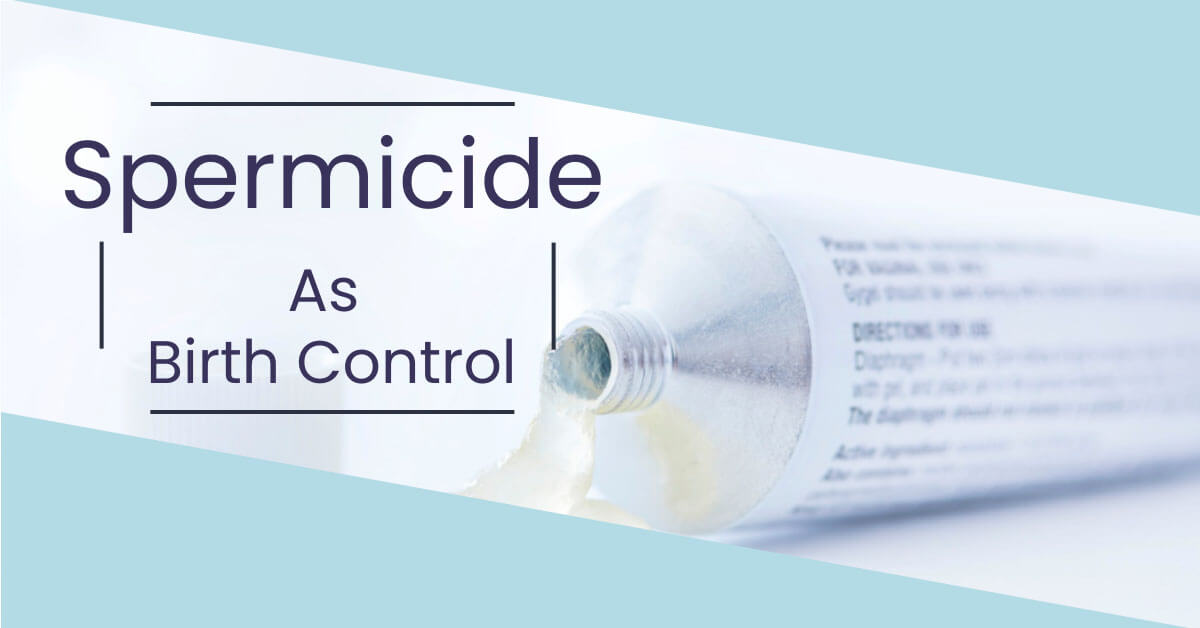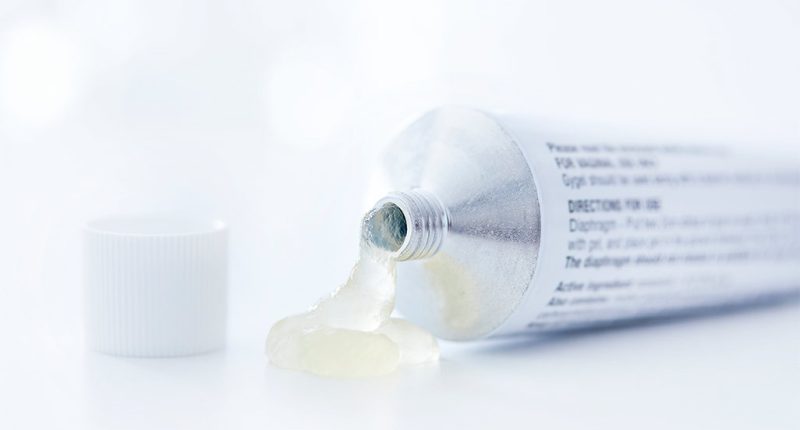Female: Spermicide Side Effects & Health Benefits – Spermicide works best if you use it correctly every time you have $ex, which is difficult for some people to do. Spermicide can also have side effects.

What are spermicides?
Spermicides are a form of chemical contraception that works by killing or stopping sperm on contact, thus making the sperm inactive and unable to pass through the cervix to fertilize an egg.
Spermicides come in a variety of forms – creams, gels, foams, suppositories, tablets, and films – but are currently not available in Australia.
How do they work?
Spermicides are applied deep into the v@gina, close to the cervix, before $ex to prevent sperm from entering the uterus. After $ex, sperm normally swim up the v@gina, through the cervix and into the uterus, and then up the fallopian tubes. It takes one to 2 hours for sperm to reach the ends of the fallopian tubes. The sperm usually meet the egg in the outer one-third of the fallopian tube. However, the spermicide blocks the uterus and also immobilizes sperm so they can’t swim, thus preventing them from reaching the egg in the fallopian tube.
The chemical most commonly used in spermicides is called nonoxynol-9.
How effective are they?
Spermicides are not considered an effective form of contraception on their own, but they can be used in conjunction with a barrier method of contraception such as condoms, diaphragms, and cervical caps.
If spermicides are used as the only form of contraception, up to 28 percent of women may become pregnant within a year.
Risks of spermicide use
Frequent use of certain spermicides may increase the risk of getting a $exually transmitted infection (STI), including HIV, from an infected partner.
Some people have allergies to spermicides or find they irritate the v@gina, causing burning, rash, or itching. They may cause irritation to their partner’s penis or a burning feeling during urination. If this happens you could try another brand to find one that works for you.
There is also a suggestion that using spermicides increases the risk of a urinary tract infection (UTI) in women, potentially damaging the normal bacterial flora of the v@gina and by increasing irritation.
Advantages
Some of the advantages of spermicides are that they:
- are easy to use;
- don’t require a prescription;
- do not affect the menstrual cycle; and
- increase lubrication during $ex.
Disadvantages
Some of the disadvantages of spermicides are that they:
- do not provide protection from $exually transmitted infections (STIs);
- are not considered an effective form of contraception when used alone;
- may produce side effects such as v@ginal or penile irritation;
- may increase the risk of developing urinary tract infections (UTIs);
- must be applied at the correct time, and reapplied with subsequent $ex acts; and
- must remain in place for 6-8 hours after ejaculation to make sure all sperm are killed.
Using spermicides
You should apply the spermicide into your v@gina, usually with an applicator, as high as possible, before intercourse, but not more than 30 minutes before having $ex. You should follow the package instructions carefully, and re-apply the spermicide if $exual intercourse is repeated or delayed. You must also wait 6-8 hours afterward before rinsing or douching.
Spermicide suppositories are inserted high into the v@gina by hand. If you are using spermicide with a diaphragm, apply it to the upper side that will be in contact with the cervix. If you have $ex again apply additional spermicide without removing or dislodging the diaphragm.
You have to use it every time you have $ex.
In order for spermicide to work as well as possible, you have to use it every time you have v@ginal $ex — and you have to use it correctly.
If you’re not sure that you’ll be able to use spermicide every single time you have v@ginal $ex, there are plenty of other types of birth control out there that are easier to use and offer better protection against pregnancy (like IUDs and implants). Take this quiz to find a method that’s right for you.
Remember: whatever kind of birth control you’re on, using condoms or internal condoms every time you have $ex is the best way to reduce your risk of getting STDs. And using condoms along with another birth control method also gives you extra pregnancy protection.







